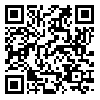Volume 6, Issue 1 (12-2012)
2012, 6(1): 57-65 |
Back to browse issues page
Download citation:
BibTeX | RIS | EndNote | Medlars | ProCite | Reference Manager | RefWorks
Send citation to:



BibTeX | RIS | EndNote | Medlars | ProCite | Reference Manager | RefWorks
Send citation to:
Akbari M, Zare H. Prediction of risky behavior in adolescence and its relationship with sensation seeking and decision making styles. Research in psychological health 2012; 6 (1) :57-65
URL: http://rph.khu.ac.ir/article-1-23-en.html
URL: http://rph.khu.ac.ir/article-1-23-en.html
1- , mehrdadakbari2003@yahoo.com
Abstract: (13609 Views)
Adolescence is one of the most challenging periods of human life. Personal, biological and psychological experiences cause extreme changes in this period of life. During these changes adolescences discover new and different behavioral and emotional stimuli for their adulthood. The main purpose of this study was to determine the relationship between sensation seeking, decision-making styles and risky behaviors among the adolescents in Dezful city. Descriptive- correlational method was used in this study. 450 Dezful’s high school students (16.3 and 1.08 were the average age and standard deviation respectively) were selected through multi-stage random sampling. In this study, Young’s risky behaviors scale, Zuckerman sensation seeking scale (a 40 -item scale), and questionnaire of general decision making styles were used. Analysis of Pearson correlation coefficient test showed that there was significant positive relationship between the risky behavior and the total score of sensation seeking and its subscales. Also, there was significant positive relationship between the risky behavior and the intuitive and dependant decision-making styles, and there was negative relation between the risky behavior and rational decision-making style. Furthermore, the intuitive and immediate decision – making styles were positively in relationship with sensation seeking and were negatively in relationship with rational decision-making style. The results of multiple regression analysis showed that the sensation seeking, decision making, gender and age together can explain 40% of the changes of risky behaviors variance.
Type of Study: Research |
Published: 2012/12/15
Published: 2012/12/15
Send email to the article author
| Rights and permissions | |
 | This work is licensed under a Creative Commons Attribution-NonCommercial 4.0 International License. |





